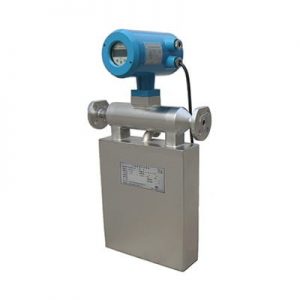Most of the liquefied gas is stored in spherical tanks. The conventional measurement method uses a glass plate level gauge installed on the spherical tank or a manual gauge to measure the volume, and then calculate the mass based on the density value measured by offline sampling. Regardless of whether you use a glass plate level gauge or a manual gauge, the inherent defects often affect the accuracy of the volume, and the composition of the liquefied gas changes greatly under the influence of temperature and pressure, and the density value used is not accurate. Therefore, the accuracy of conventional methods for measuring liquefied gas is relatively low.
At present, many companies use Coriolis mass flow meters to measure the flow of liquefied gas. It overcomes the influence of human factors and changes in temperature, pressure, and composition on the measurement, and improves the accuracy of measurement.
Because liquefied gas is easy to vaporize in pipeline flow, when using a mass flowmeter to measure its flow, its selection, installation, and use must be carefully considered to achieve the purpose of accurate measurement. First of all, the flow range and pressure drop should be considered when selecting a flow meter. If you simply consider the flow range and choose a flowmeter that is too small, at normal flow rates, an excessive pressure drop may be formed due to the high flow rate, which may cause the vaporization of liquefied gas and make the flowmeter unusable. Secondly, for straight pipe sections, this kind of flowmeter does not have special requirements, but when the fluid passes through elbows, valves, or constricted (expanded) pipes, throttling will occur due to sudden changes in flow velocity and cause vaporization and even cavitation.
Therefore, there should be a certain straight pipe section at the front end of the flowmeter. In actual operation, the valve should not be closed suddenly to prevent similar phenomena from affecting the measurement. In addition, vaporization in liquefaction. When measuring gas, it is also necessary to ensure that there is sufficient back pressure downstream of the flowmeter to prevent the vaporization of liquefied gas.

